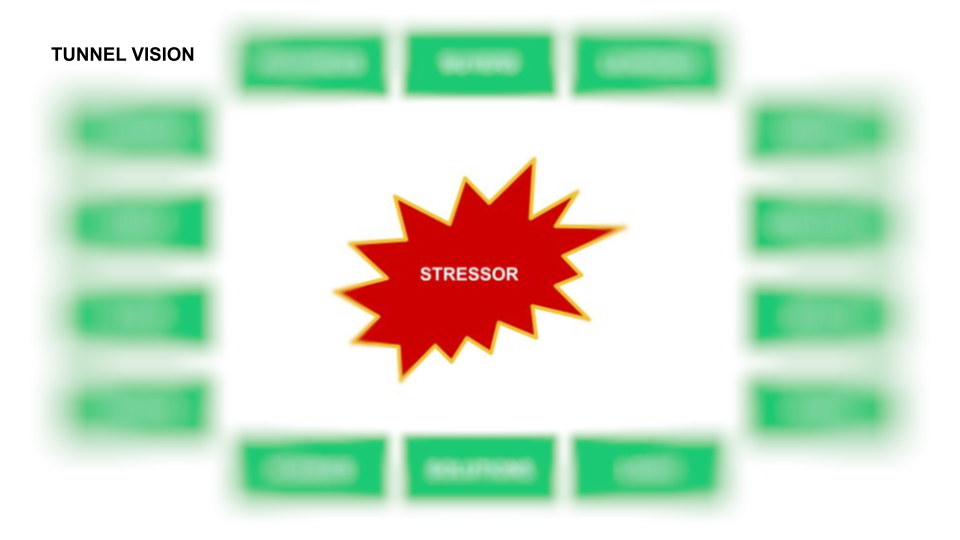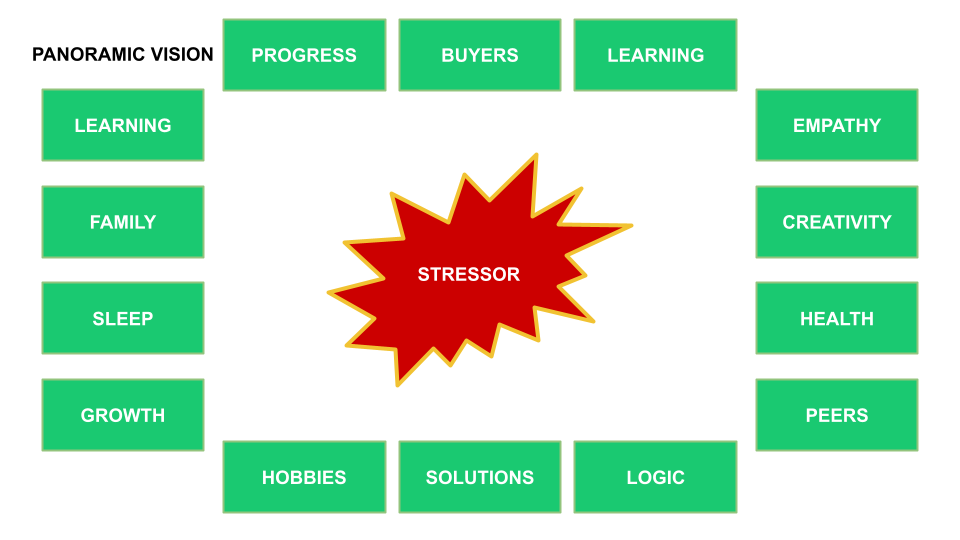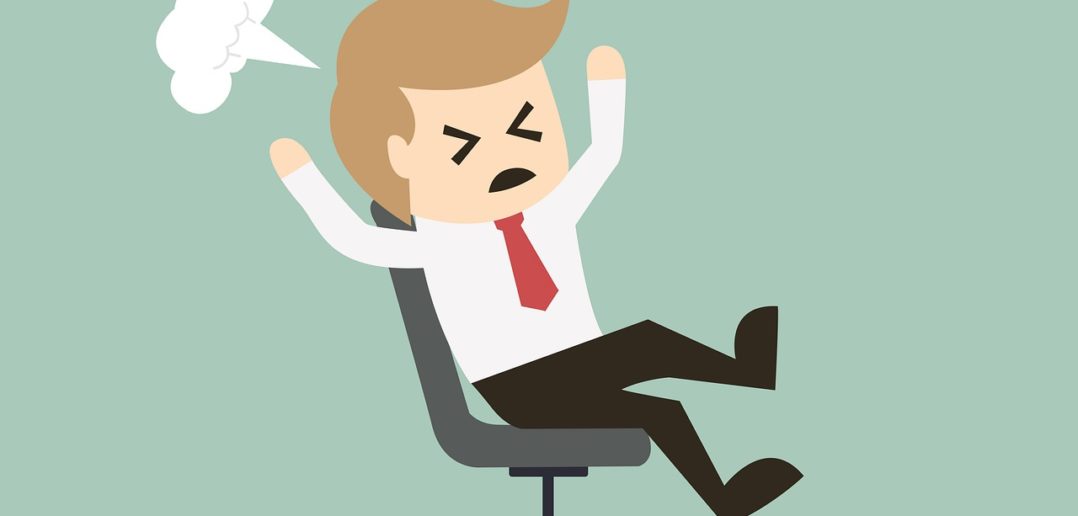When you’re feeling stressed, did you know you can use your eyes to make yourself feel more calm and relaxed?
Well that’s what the latest neuroscience research is telling us.
What happens when you start feeling stressed?
When we encounter a stressor like a late night email from our boss, an angry message from a client or we get into an argument with our partner – our body creates a stress response.
This stress response automatically changes our body in a variety of ways so we can better respond to the challenge and adversity created by the stressor.
One of the first changes our body makes is our pupils dilate.
This allows more light to enter our eyes so we can focus more clearly on the stressor, while our peripheral vision blurs. Your tunnel/ focused vision will be very similar to portrait mode on your iPhone and will look something like this:

Under healthy circumstances, this is an extremely helpful adaptation and the system should work something like this:
See Stressor > Stress Response Turns On > Pupils Dilate + Other Adaptations > Resolve Stressor > Stress Response Turns Off
Unfortunately many of us have a very different experience while working in sales. Stressors are constant and unrelenting, which means our stress response stays on throughout the entire day.
Our world looks way more like this:
Angry Client Email > Stress Response Turns On > Pupils Dilate + Other Adaptations > Resolve Email > Slack Message From Boss > Stress Response Stays On … (cont./repeat)
When this stress response stays on all day we can start to feel overwhelmed, anxious, panicked and fearful as our cortisol levels, adrenaline levels, heart rate and respiratory rate all remain elevated.
To make things worse…
What do we normally do when we feel stressed?
We pick up our phones.
Switching from one screen to another keeps our pupils dilated so we can focus on our phone. This is sending signals to our brain that keeps our stress response turned on.
In our focused state, we’re also processing information extremely fast which distorts our perception of time. We start thinking in terms of seconds, minutes and hours instead of days, weeks and years.
Hence why deadlines and immediate stressors feel so important. Over time this is how we lose perspective.
So what can we do when we’re feeling stressed?
This is where the latest neuroscience research from Dr. Andrew Huberman is so fascinating. For a very long time, researchers believed that our stress response was automatic and something we could not control.
According to Dr. Huberman’s research – this is not true.
We can turn off our stress response through various breathing techniques and extended exhales that I’ve shared previously here.
We can also turn off our stress response by defocusing our eyes and switching to panoramic/ peripheral vision.
By engaging our peripheral vision, our pupils contract and give our focused brain a much needed break. This signals to our nervous system to calm down and switches off our stress response.
It also allows us to regain perspective and a better sense of time, so we can return to a stressor/problem with new insight.

Engaging our panoramic vision is also quite easy and Huberman’s lab found the best way to do this is to look at a horizon.
Relax your gaze and look as far out as you can without focusing on anything in particular.
Big open fields, scenic views or coastlines work great for this, but challenging when you live in a big city like myself.
The best solution I’ve found for those of us living in a city is to simply look up. Find a park, lie on your back and simply soften your gaze while looking at a vast blue or cloudy sky. Please avoid looking directly into the sun.
As your vision softens, you’ll start to experience more calm.
In addition to engaging your panoramic/ peripheral vision you can also switch off your stress response by generating something called optic flow.
Optic flow is the passing of visual images through your eyes.
Dr.Huberman mentions tons of research on his podcast that shows optic flow lowers activity in one of the main stress response centers in the brain (amygdala).
The best way to create optic flow is to generate forward movement through walking, cycling or even driving.
If you’ve ever gone for a drive when you’re stressed – now you know it’s because of the optic flow you generate which is helping you calm down.
Key learnings to try next time you’re feeling stressed:
- Hide your phone.
- Get outside.
- Engage peripheral vision (view horizon or look up)
- Create optic flow (walk, cycle, drive)
I highly recommend you checkout The Huberman Lab podcast for more research based stress management strategies like the ones shared here.
Also remember to checkout The Guide To Better Mental Health In Sales and online program as they will equip you with more tools that help you improve sales performance through better Mental Health.
About The Author

Jeff Riseley is currently the Founder of the Sales Health Alliance and Mental Health Advocate. With over a decade of sales experience – Jeff understands the importance of Mental Health in achieving peak sales performance.
Jeff combines his sales and Mental Health expertise to improve sales performance through mental health best practices. His strategies have helped sales teams become more motivated, resilient and better equipped to tackle stressful events within sales.




